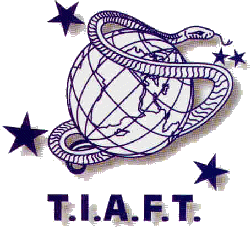Summa Technologiae Toxicologiae Forensis
 Maciej J. Bogusz
Maciej J. Bogusz
Institute of Forensic Medicine, Aachen University of
Technology, Germany
You can mass-produce incredible quantities of facts and figures.
You cannot mass-produce knowledge,
which is created by individual minds,
drawing on individual experience,
separating the significant from the irrelevant.
Th. Roszak
The importance and role of technical progress in forensic toxicology are reviewed, taking into account the most difficult problems of the discipline. Modern analytical techniques have not only made it possible to determine some previously inaccessible substances, but have also been applied to difficult problems of interpretation. The ability to identify certain metabolites has not only made it possible to gain unequivocal evidence of exposure to a given substance but also to identify the route of exposure. It is therefore beyond doubt that the use of sophisticated instrumentation, particularly chromatographic techniques coupled with mass spectrometric detection has been a prerequisite of progress both in the detection of various drugs and the interpretation of gathered data. However, the high costs of instrumentation have created financial pressure, which may jeopardize the development of forensic toxicology as a discipline. The main task of this discipline is to explain the relationship between an analytical finding and its biological effect - in the service of Justice. This task sometimes seems to be neglected in favor of pure technological, analytical achievements. It should be kept in mind that all modern, sophisticated, expensive instruments are only tools for collecting information, which must not be confused with knowledge
or wisdom.
The Power of Drug Testing
 Edward J. Cone
Edward J. Cone
ConeChem Research, Baltimore, MD, USA
Human beings are the most curious of all organisms. Our tendency is to inspect, dissect and analyze anything new in our world in an attempt to understand it. Over many centuries, we have developed the unique ability to identify and reproduce natural chemical substances found in the environment. As our knowledge of chemistry advanced, we learned how to make new synthetic drugs that heretofore did not exist in nature. As part of these experiments, humans also learned about uses and abuses of new drugs. Widespread experimentation and abuse of drugs has become commonplace in modern society, but excessive drug abuse has also become a threat to our existence. As a result, scientists in the twentieth-century developed methods for detection, monitoring, and treatment of drug abuse.
Scientific and technological advances in the forties, fifties and sixties set the stage for development of highly sophisticated analytical methods that could be used for drug testing.
Widespread implementation of workplace drug testing programs in the USA in the seventies and eighties highlighted public awareness of the drug abuse problems that were occurring in their communities. Continued development of drug testing methodologies in the eighties and nineties provided health specialists with the analytical tools needed for diagnosis and treatment of drug
abuse.
This evolution and development of drug testing technology has a fascinating history that is intertwined with and often resulting from simultaneously occurring historical events. Frequently, society's concerns with war, disease, environmental pollution, and natural or human-made calamities were translated into meaningful public support of science. Increased legislative actions and financial resources were directed toward advancing scientific endeavors that were deemed worthy by the general public. Major educational and scientific directives were begun to protect the environment, explore space, develop national defense systems, and cure diseases. Much of the drug testing technology now employed evolved out of these publicly supported efforts.
As the current century draws to a close, drug epidemics and the associated spread of diseases continues to threaten the health and financial stability of many nations. Clearly, many countries will continue to use existing technology and implement new drug testing programs.
Access to newer and more reliable drug testing technologies will enhance these efforts, but still may not guarantee their success. It shall be the responsibility of each country to utilize this technology wisely. Drug testing is frequently performed on individuals to determine if they have abused drugs in the recent past. The process of drug testing invokes great power to those who are in the position of interpreting test results. Liberty, employment and financial gain may be decided on the basis of drug test results. The unique power of drug testing is exemplified by the millions of decisions that are now made annually in the USA regarding an individual's suitability for
employment.
These decisions are frequently based solely on drug testing results. Other countries throughout the world now use drug testing in forensic investigations, in drugged driving cases and in many other applications. This article provides a brief examination of how this powerful technology has evolved against a background of social strife, upheaval, triumph and change.





